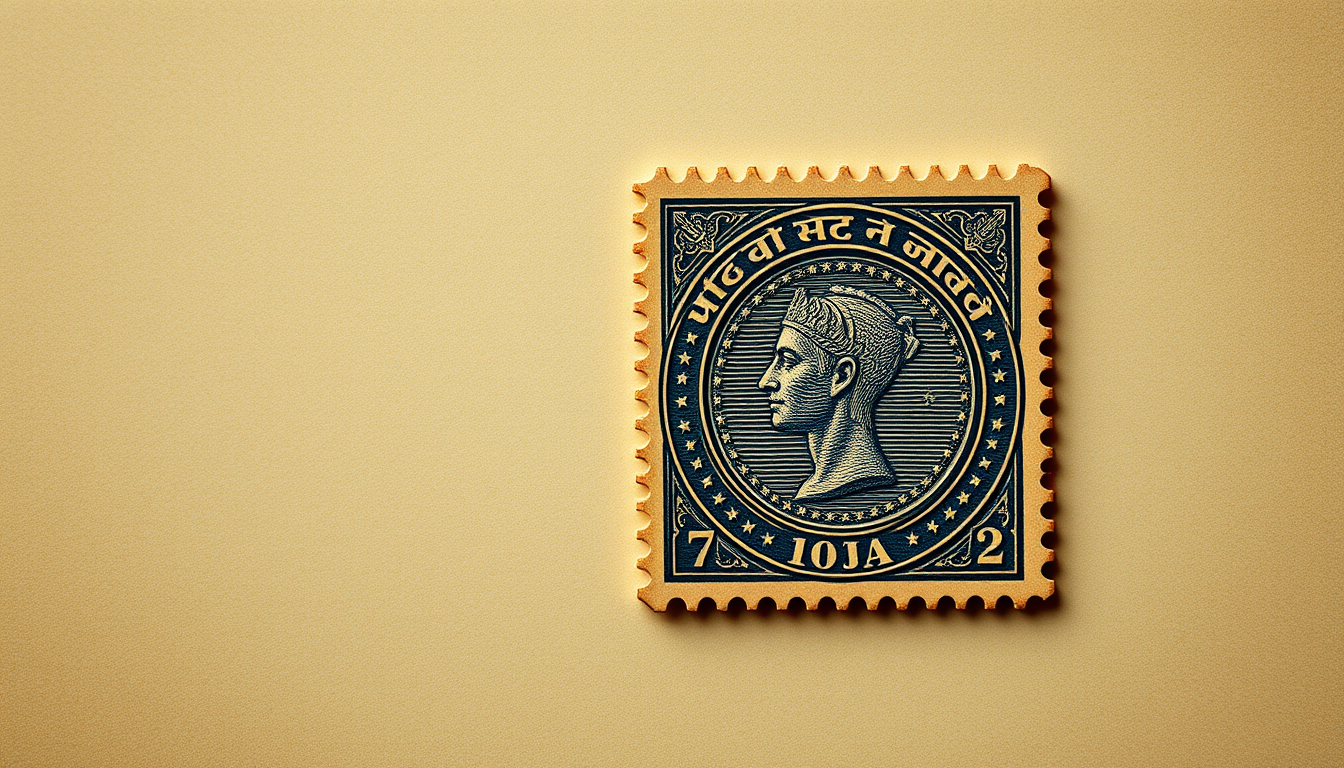India, with its rich history and diverse cultural heritage, has produced some of the most fascinating and rare stamps in the world. These stamps not only serve as historical documents but also as valuable collectibles for philatelists and enthusiasts. This comprehensive guide delves into the world of rare Indian stamps, exploring their history, significance, and value.
The History of Indian Stamps
The first Indian stamps were issued in 1854, during the British Raj. The stamps were designed by William Wyon and featured Queen Victoria. The introduction of these stamps marked the beginning of a new era in Indian postal history.
The British Raj Era
During the British Raj, India saw a significant increase in postal services. The stamps issued during this period are highly sought after by collectors due to their historical significance and rarity. Some of the most notable stamps from this era include:
– 1854 Queen Victoria Stamp: The first Indian stamp, featuring Queen Victoria.
– 1864-1869 Stamps: These stamps are notable for their unique designs and are highly collectible.
Post-Independence Era
After India gained independence in 1947, the country began issuing stamps that reflected its new identity. The post-independence era saw the introduction of stamps featuring Indian leaders, cultural icons, and historical events.
Modern Era
In recent years, India has continued to produce stamps that celebrate its rich heritage and cultural diversity. These stamps often feature themes such as wildlife, festivals, and historical sites.
Types of Rare Indian Stamps
Rare Indian stamps can be categorized into several types based on their rarity, design, and historical significance.
Error Stamps
Error stamps are stamps that have printing errors or imperfections. These stamps are highly sought after by collectors due to their rarity and the challenge they present in identifying them.
Proof Stamps
Proof stamps are stamps that were created as test prints before the final issue. These stamps are often more valuable than regular stamps due to their limited availability.
Commemorative Stamps
Commemorative stamps are issued to celebrate significant events, anniversaries, or achievements. Some of the most valuable commemorative stamps from India include:
– 1947 Independence Day Stamp: Issued to celebrate India’s independence from British rule.
– 1962-1963 Stamps: These stamps feature the first Indian Prime Minister, Jawaharlal Nehru.
Thematic Stamps
Thematic stamps are stamps that feature specific themes or subjects. Some of the most popular thematic stamps from India include:
– Wildlife Stamps: These stamps feature various species of Indian wildlife.
– Festivals Stamps: These stamps celebrate Indian festivals such as Diwali, Holi, and Eid.
The Value of Rare Indian Stamps
The value of rare Indian stamps can vary greatly depending on several factors, including their rarity, condition, and historical significance. Some of the most valuable stamps from India include:
– 1854 Queen Victoria Stamp: This stamp is one of the most valuable Indian stamps due to its historical significance and rarity.
– 1864-1869 Stamps: These stamps are highly collectible and can command high prices at auctions.
– 1947 Independence Day Stamp: This stamp is highly sought after by collectors due to its historical significance.
How to Collect Rare Indian Stamps
Collecting rare Indian stamps can be a rewarding hobby. Here are some tips for getting started:
Research
Before you start collecting, it’s important to do your research. Familiarize yourself with the history of Indian stamps and the different types of rare stamps available.
Build a Collection
Start by building a collection of stamps that interest you. This could include stamps from a specific era, theme, or country.
Authenticate Your Stamps
When purchasing rare stamps, it’s important to ensure that they are authentic. Consider using a professional stamp authenticator to verify the authenticity of your stamps.
Store Your Stamps Properly
Proper storage is essential for preserving the value of your stamps. Store your stamps in acid-free albums or holders to prevent damage.
Join a Philatelic Society
Joining a philatelic society can provide you with valuable resources and opportunities to connect with other collectors.
Rare Indian Stamps: A Few Notable Examples
The 1854 Queen Victoria Stamp
The 1854 Queen Victoria Stamp is one of the most famous and valuable Indian stamps. This stamp features Queen Victoria and was issued during the British Raj. The stamp is highly sought after by collectors due to its historical significance and rarity.
The 1947 Independence Day Stamp
The 1947 Independence Day Stamp is another highly valuable Indian stamp. This stamp was issued to celebrate India’s independence from British rule. The stamp features a map of India and is highly sought after by collectors.
The 1864-1869 Stamps
The 1864-1869 Stamps are a series of stamps that are highly collectible. These stamps feature unique designs and are highly sought after by collectors due to their rarity and historical significance.
Conclusion
Rare Indian stamps are a fascinating and valuable aspect of Indian postal history. These stamps serve as historical documents and valuable collectibles for philatelists and enthusiasts. Whether you are a seasoned collector or just starting out, there is always something new and exciting to discover in the world of rare Indian stamps. By understanding the history, significance, and value of these stamps, you can build a collection that you can be proud of and that will stand the test of time.
